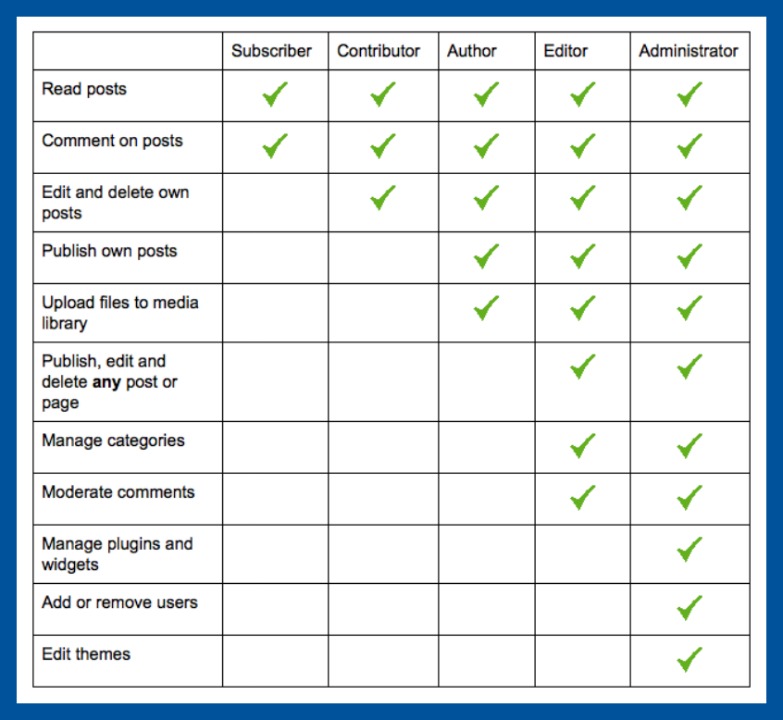WordPress user roles
There are five user roles in WordPress with different levels of access. Depending on the user, you may not want to give them full access to your blog. Read about the different abilities of each user so that you can correctly assign roles to your blog’s users.
Subscriber
A subscriber (sometimes known as a follower or viewer) is someone who has signed up to receive updates about your blog. They can read and comment on posts and pages, but have no editing rights. For public blogs, anyone can be a subscriber.
Contributor
A contributor can only create and edit their own posts, but only an editor or administrator can publish them. Contributors have no access to anyone else’s posts, and cannot edit their own posts once they have published. This role is perfect for guest or student bloggers.
Author
An author has the ability to create, edit, delete and publish their own posts. They can also upload media content, and edit comments on their own posts. However, they cannot touch anyone else’s posts or modify pages.
Editor
An editor can create, edit, publish and delete any post or page. They can also moderate all comments, and manage categories and tags. This role is good for team members.
Administrator
An administrator has full power. In addition to everything an editor can do, administrators can manage users, themes, settings, widgets and plugins. This role is good for team leaders, or whoever will be “in charge” of the blog.
